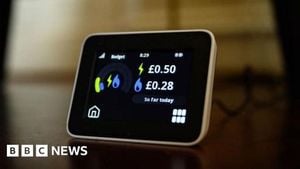Japan's core consumer prices surged by 3% in February 2025 when compared to the same month last year, according to data released by the government on March 21. This increase reinforces market expectations for further interest rate hikes by the Bank of Japan (BOJ), as it remains above the central bank's inflation target of 2%.
The latest figures reveal that the core consumer price index (CPI), which excludes volatile fresh food costs, surpassed economists' forecasts of a 2.9% gain. This indicates persistent inflationary pressures in the Japanese economy, despite the government's efforts to manage price increases through energy subsidies.
Although prices excluding fresh food rose consistently by 3.0% year-on-year, this figure marked a deceleration from January’s 3.2% pace, as noted by Japan’s Ministry of Internal Affairs. Despite this easing, overall inflation has slowed less than anticipated, slipping to 3.7% from 4% the previous month.
The data aligns closely with recent inflation reports from Tokyo, which serve as a crucial early indicator of national trends. Interestingly, the government’s energy subsidies have played a significant role, effectively reducing the overall inflation rate by 0.33 percentage points in February.
As the waves of economic recovery and pressure continue to buffet Japan, the BOJ's key price gauge has remained at or above the 2% target for an impressive 35 consecutive months. Analysts suggest that this ongoing trend signals the bank's commitment to gradually increasing interest rates in response to inflationary pressures.
In economic discussions, many financial experts convey robust confidence in the BOJ's decision-making framework. Yet a critical examination raises questions about how sustainable these rate hikes can be in an environment shaped by governmental subsidies and transient inflation factors.
The maintenance of consumer demand, sometimes bolstered by stimulus measures, continues to dictate the direction of prices. This complexity will undoubtedly factor into future BOJ meetings, where inflation indicators will be scrutinized closely.
Despite some signs of moderation in inflation rates, the persistence of rising core consumer prices suggests pain points for many Japanese households. The dual-edged sword of rising prices constrains purchasing power while also nurturing a fragile economic recovery—the balancing of these two dynamics will be key for the BOJ.
Going forward, as markets adjust to these changes, businesses and consumers alike will watch closely to see how these inflation figures might influence policy and their everyday lives.
With consumer prices reacting to both local and global economic pressures, how the BOJ navigates this landscape will be paramount. The assertion of a strong labor market juxtaposed against these inflationary trends creates an interesting scenario for fiscal policy in the upcoming months.
As Japan tackles the task of restoring economic equilibrium post-pandemic, the commitment to maintaining inflation around the set target presents both an opportunity and a challenge. The coming weeks will thus be pivotal as data unfolds, offering fresh insights into the trajectory of Japan’s economic recovery and inflation control measures.






